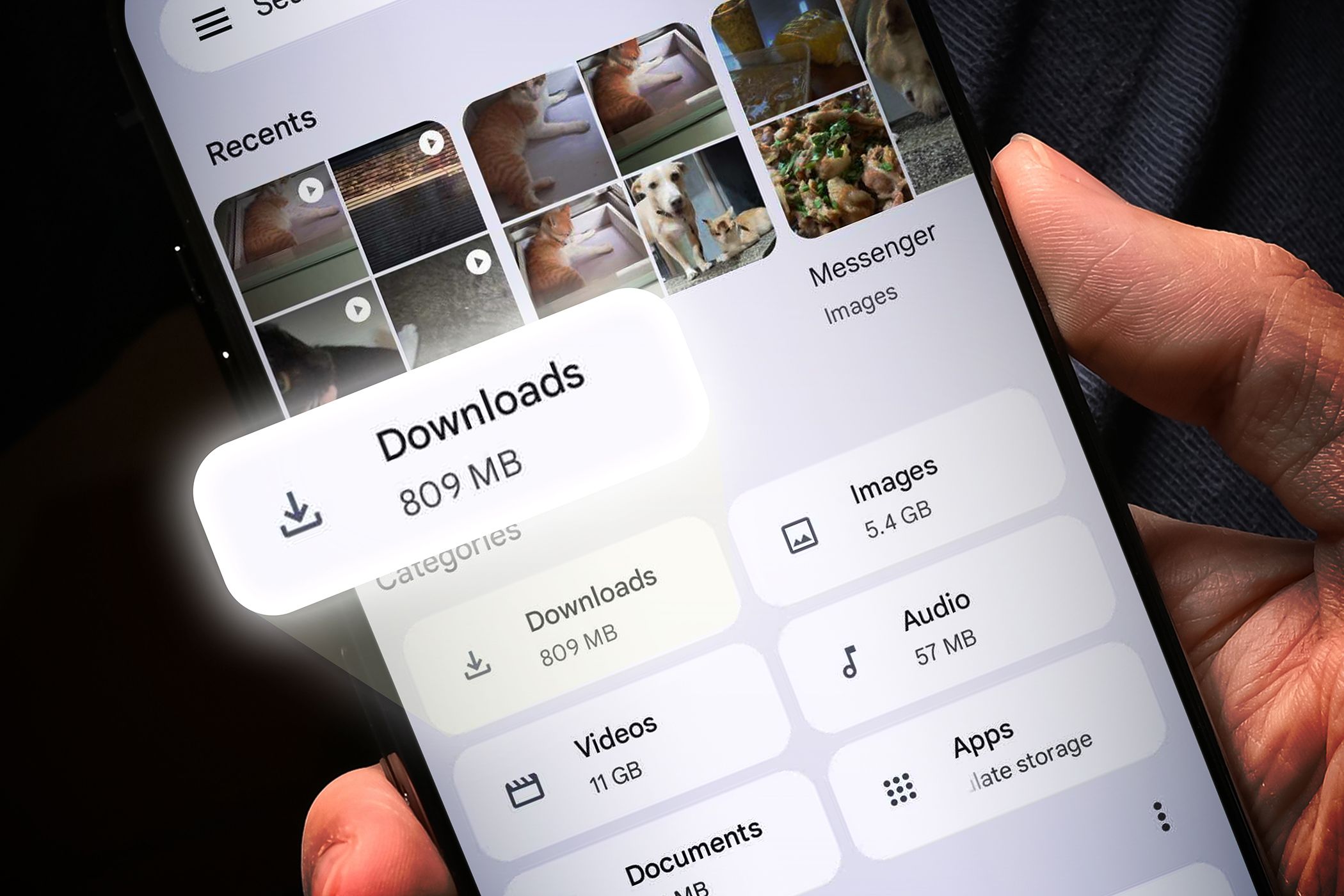
Fujifilm X100V Unveiled: A Comprehensive Review of The Most Popular Camera Today

Fujifilm X100V Unveiled: A Comprehensive Review of The Most Popular Camera Today
Key Takeaways
- The Fujifilm X100VI offers a 40.2MP sensor, 20 Film Simulation modes, and 6.2K video capabilities.
- The X100VI stands out for its portability, image quality, and unique features like film simulation.
- Despite smartphone competition, the X100VI is a valuable tool for hobbyists and professionals seeking better image quality.
By all accounts, a dedicated, fixed-lens digital camera doesn’t make any sense in 2024, and yet, the Fujifilm X100VI is the trendiest gadget of them all. Surprisingly, despite smartphones’ push into computational photography, the X100VI is good enough to warrant most of its attention.
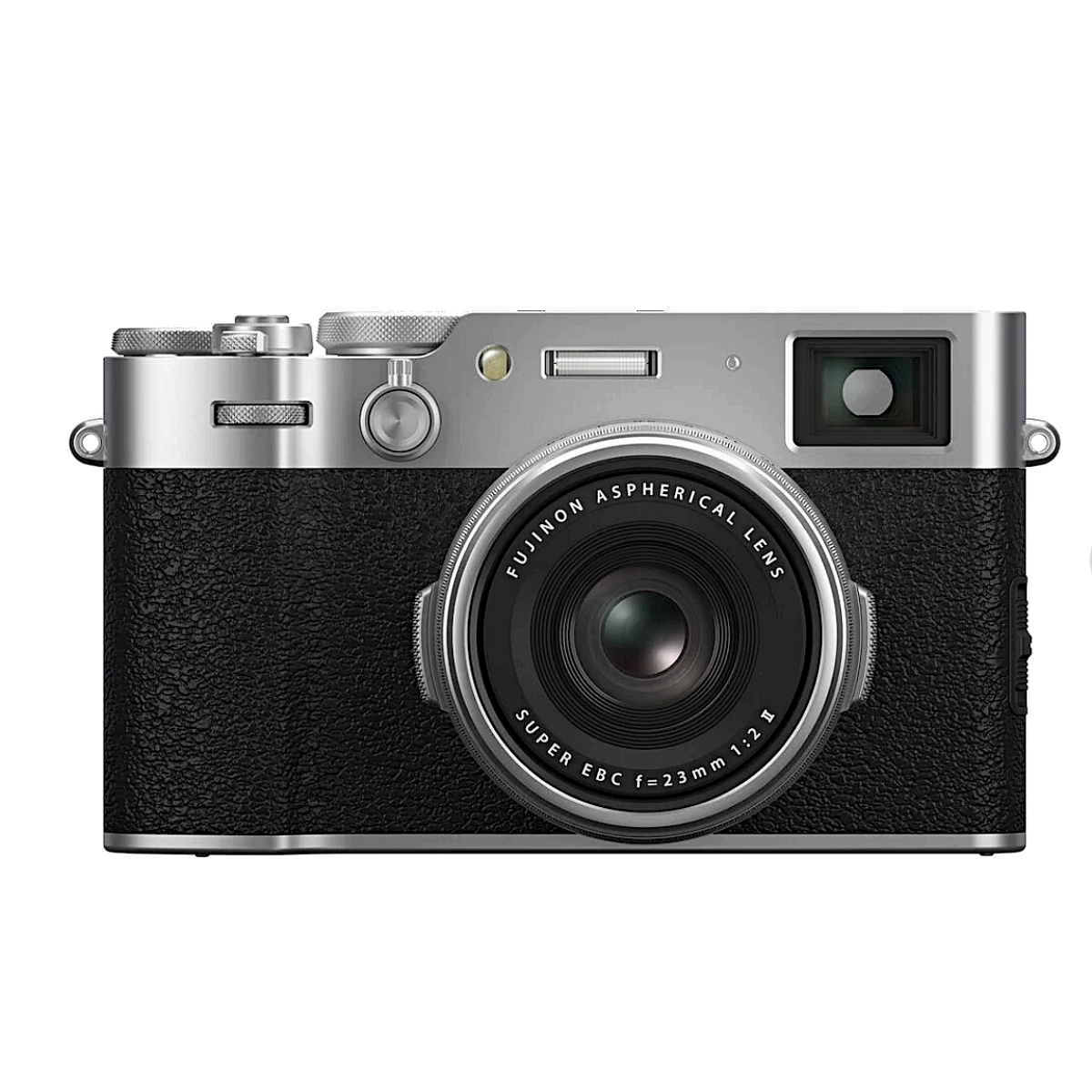

Fujifilm X100VI
8/ 10
X100VI has 20 built-in Film Simulation modes and enjoy a new creative opportunity with REALA ACE. Featuring Fujifilm’s latest X-Trans CMOS 5 HR sensor and X-Processor 5, you can create 40.2MP images or video up to 6.2K/30P, sharing them in the moment or cherishing them for the future.
Pros
- 40MP sensor made cropping more practical
- Fewer blurry images thanks to new IBIS
- Camera continues to improve on X100 series line
Cons
- Battery life is mediocre
- Wi-Fi transfer wasn’t a joy to use
$1599.99 at Best Buy $1599.99 at B&H Photo Video $1599.99 at Moment
Price and Availability
Officially, the Fujifilm X100VI is available now and retails for $1,599. It comes in a silver or black color. More realistically, its availability could be listed as: Good luck.
The X100V was out of stock for at least 12 months before it was replaced by the X100VI on February 20th, 2024. With a bump in its retail price and relocating of manufacturing, there’s hope that stock will begin flowing again soon, but at launch, the product is still a wait-and-see.
Specifications
Sensor Size
40.2MP
Video Resolution
Up to 6.2K
Battery
Up to 450 frames
Connection
Bluetooth 4.2, Wi-Fi, HDMI, USB-C, AUX
Size
5 x 2.9 x 2.2in (128 x 74.8 x 55.3mm)
Weight
1.1lbs (521g) with battery
Lens
Fixed 23mm Lens / F2.0 Aperture
Sensor
23.5mmx15.7mm (APS-C) X-Trans CMOS V HR with primary color filter
Focus
Single AF/ Continuous AF/ MF
Subject detection
Yes (Animal/Bird/Automobile/Motorcycle/Bike/Airplane)
Hotshoe
Yes (Dedicated TTL Flash compatible)
IBIS
Sensor-Shift, 5-Axis
Expand
What’s the Purpose of the X100VI?
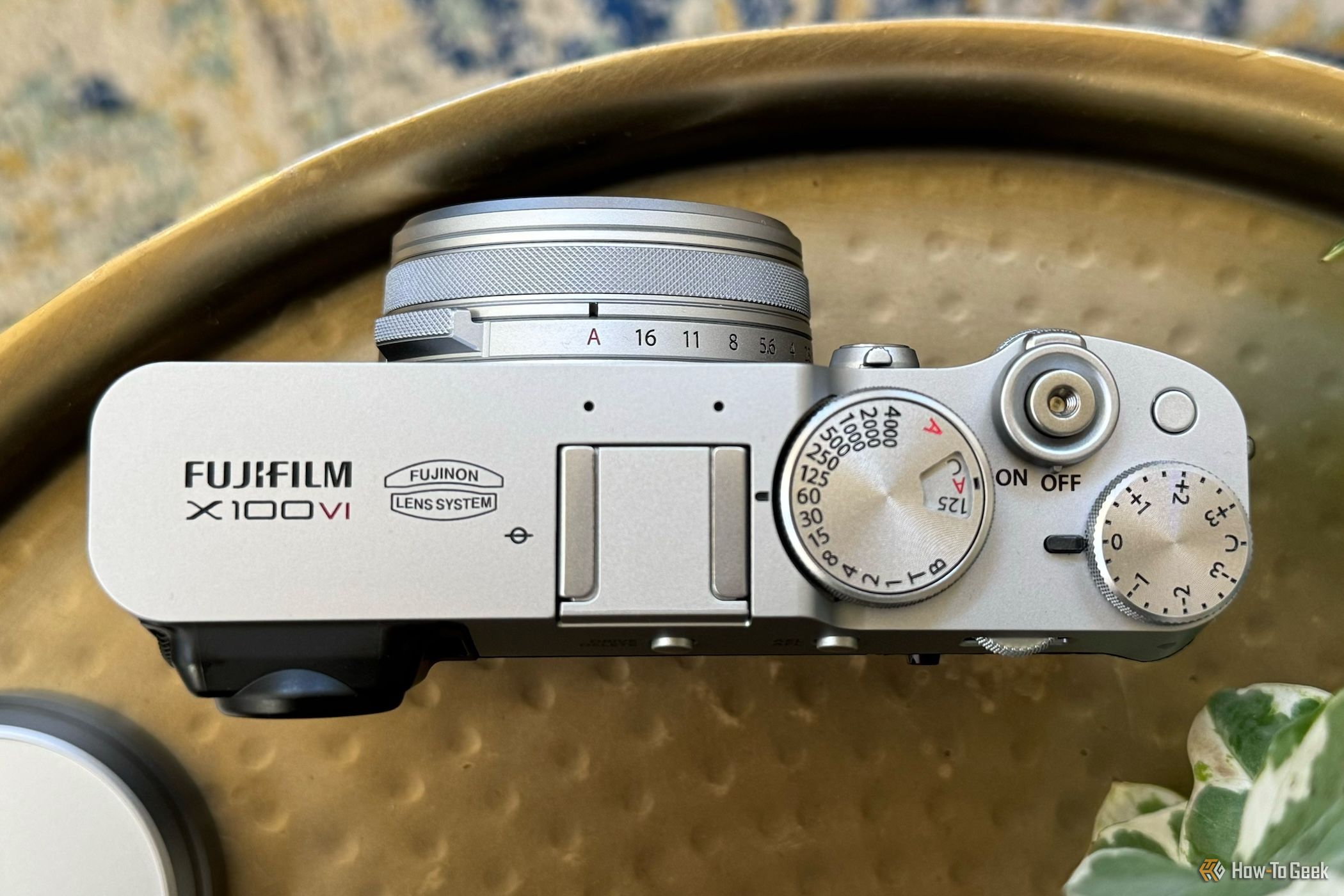
Tyler Hayes / How-To Geek
If we can get existential for a moment, I think it’s worth considering why people are interested in Fujifilm’s X100VI, and the whole X100 series of cameras. The answer is not TikTok, by the way.
TikTok has served as a discovery channel and provided exposure for Fuji cameras, but the social video network can’t make people repeatedly spend $1,400 to $1,600 on a device that doesn’t have some appeal beyond its aesthetic.
The draw of the X100VI, and V before, is its power tucked into a small, nearly pocketable size. That’s why I was initially drawn to the X100T in 2015. Now, it’s the combination of a 40MP sensor, in-body image stabilization, optical viewfinder, film simulation, and more, that keeps the handheld still relevant today. Plus, there just isn’t the same level of competition from Olympus, Panasonic, or others for this style of camera, so the X100VI stands out even more. That “style” being a fixed, non-removable, lens. It’s similar to smartphones in this way. The phone lenses are integrated and can’t be switched out for a different one.
So why buy this type of dedicated camera in the age of prolific smartphone camera systems that live in your pocket? The Google Pixel 8 even adds generative AI into the mix. It’s because phones still don’t match the quality of images the X100VI can produce. They’re getting much closer all the time, but for now, a dedicated mirrorless camera is still better.
The X100VI is very much a pro-sumer gadget. It’s easy enough for a novice to pick up and use, but it has capabilities that some professionals could still reasonably use to do their job. So, I think the most important question is not, how good is the X100VI? The questions are, should you even be buying a dedicated camera, or how does it compare to shooting with an iPhone 15 Pro?
A 40MP Sensor, Film Simulation, and IBIS Pack a Punch
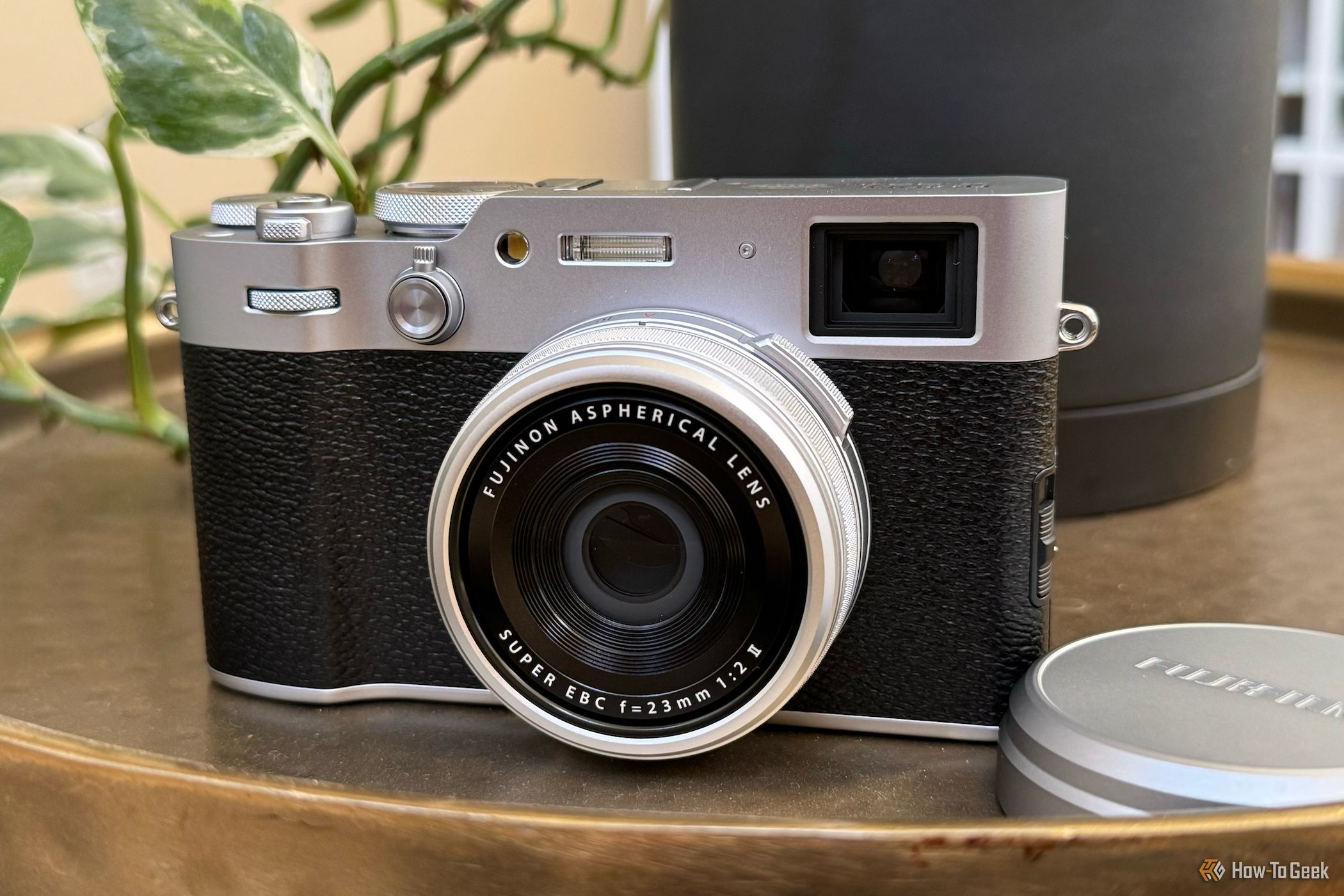
Tyler Hayes / How-To Geek
There are plenty of features worth discussing, but the three that are unique to the X100VI are the improved sensor, IBIS, and film simulation. Specifically, the first two are the most tempting updates that may tempt X100V owners.
While cameras aren’t really in a megapixel race anymore, it’s still a meaningful jump for the X100VI to get a 40.2MP sensor (7,728 x 5,152 resolution), over the previous 27MP one. The camera still features a 23mm (35mm equivalent) focal length. The higher resolution, however, affords it a little bit of reach by cropping in. Turn the focus ring to get a 50mm or 70mm equivalent shot.
I found this reach to be really helpful when I couldn’t move closer and wanted just a little tighter shot. In general, I hardly found myself using the 70mm equivalent, but I did often turn to the 50mm option for different perspectives with great results.
Improved stabilization was an invisible improvement because of the five-axis sensor-shift IBIS. That’s the whole point, though. I didn’t notice as many blurry shots as I have on other smaller, one-handed cameras that I have in the past. I felt like I could utilize slower shutter speeds or higher ISOs in handheld operation because of the added stabilization. The autofocus has been improved here, too, which will contribute to people being able to take better photos in more situations.
The film simulation isn’t new to the X100 series with this camera, but the Reala Ace preset does make a new appearance here. I found myself turning to it often as it offered a color profile suitable for a lot of lighting conditions.
Some of the nuances of using different film types might be lost on a digital generation perfectly happy to apply a variety of filters to their phone-taken photos. I’m not too far removed from that classification, but I still appreciated the native color shifts and Fujifilm’s heritage in this area.
It would be hard to argue for picking this camera exclusively for the film simulations—they are available on other Fujifilm cameras, too—but if you decide on the camera, they become an absolute cherry on top.
Is the X100VI Better Than an iPhone 15 Pro?
There’s no question that a dedicated mirrorless camera captures a better image than a camera on a mobile phone in 2024. That might not be true forever, but it’s still true today. While focusing on the image quality aspect, I was struck by the more obvious observation, however. Dedicated cameras are still as fiddly as ever.
The X100VI is super powerful and capable, but it takes weeks of attention to really become acquainted with all its settings and shortcuts. This is a product you will need to consult the manual for. Because to harness its power, you first have to know what is possible with the camera, and then you need to remember how to access things like white balance, autofocus type, aspect ratio, burst mode, and so on, so you’re ready when the moment strikes.
I intimately know the convenience of phone cameras, but it’s been in my recent time re-discovering the X100 series that it has stuck out to me what “better” means for a lot of people. If a camera is good enough and makes sharing photos really easy, that may be the better option for a lot of people.
On the other hand, if you feel in your gut that you want to capture a moment as deeply and intimately as possible, then you might be a candidate for the X100VI, despite having the latest iPhone in your pocket.
Photo Gallery
While there are a lot of factors that go into choosing a camera, one of the most obvious is the photos it produces. The collection of photos is meant to showcase the different film simulations in different scenarios. These are jpegs directly off the camera and unedited.
35mm, 50mm, and 70mm equivalent examples
Close
Film simulation examples
Close
Other random photos
Close
Is The X100VI a Good Video Camera?
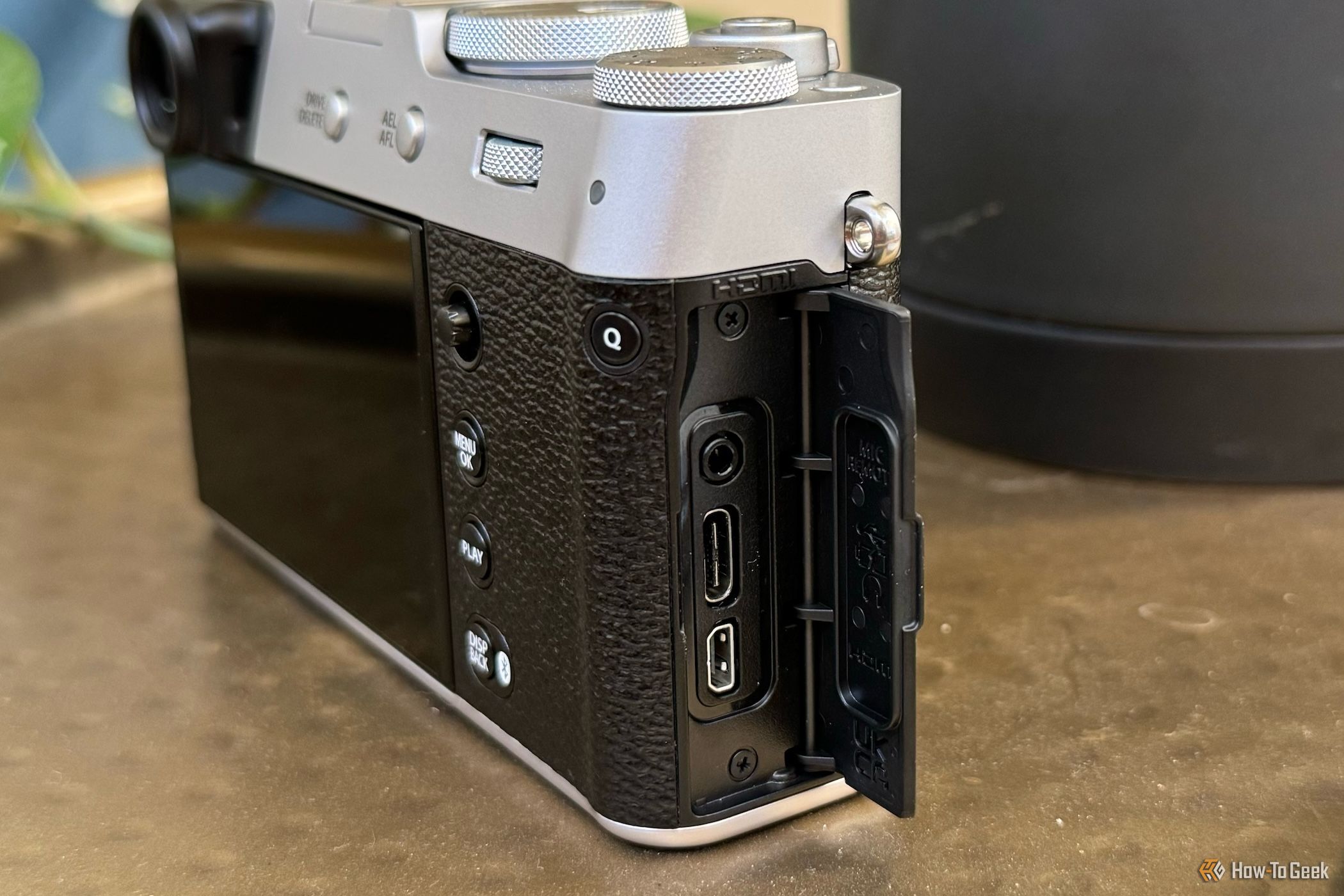
Tyler Hayes / How-To Geek
The X100VI can record up to 6.2K/30 or 4K/30,60,240 videos, and they look great, but this is not the device to buy primarily for videos. I used the video function enough to verify its quality, but I don’t generally shoot much video. In a pinch, I will still likely pick my iPhone 15 Pro for video because of its convenience. If you do need a little bit more, however, the X100VI can do it. I found the videos to be sharp overall. A microphone input and an HDMI out port enhance the experience.
If you are video-curious, I would recommend looking at Sony. The company offers smaller video options for on-the-go and has other cameras with more features aimed at videographers or YouTubers.
Connectivity: Transferring Photos to a Phone (and Other Places)
The camera includes Bluetooth, Wi-Fi, and USB-C connectivity. Fujifilm has recently updated its X app to sand off some rough edges. It’s not a great app, but considering the landscape of atrocious camera apps, it felt mostly polished and performed well enough.
The app can be used to transfer photos, but it can also be used as a remote for the X100VI. You can adjust the film simulation and other settings on the fly while using the remote function. Occasionally, I noticed a little lag while using the remote control, but nothing that would stop me from using it in the future.
Transferring photos to my phone using the app was a constant exercise in patience. The app took a few seconds to see my phone, then it would take a few seconds to create its own local network, and then even more time to connect to it. Occasionally, my phone wouldn’t switch over, so I would need to connect to it again.
When around the house, I found myself preferring to simply connect a USB-C cable from the X100VI directly to my Mac or my iPhone 15 Pro with its new USB-C port. I could import images directly into the Photos app much faster than trying to do it wirelessly. Although you can connect a Frame.io account for direct upload, the name of the game with a dedicated camera is patience. You can’t share a photo you take the moment you snap it.
Mediocre Battery Life Is Easily Solved
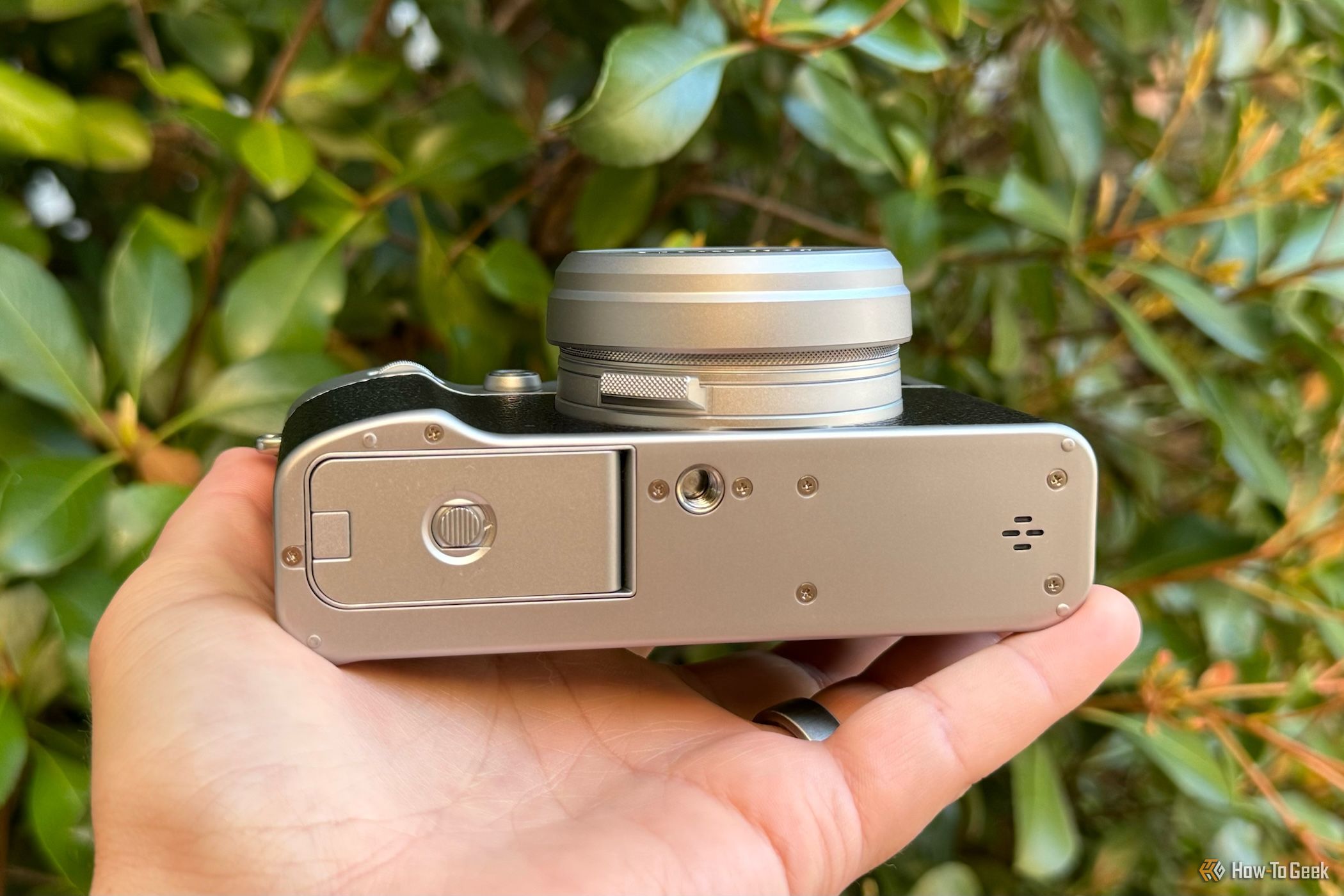
Tyler Hayes / How-To Geek
The X100VI is slightly larger than the X100V, but not enough to be noticeable. Instead of the negligible size increase going to a larger battery, it seems to have gone to housing the IBIS. That means there are some efficiencies from new parts inside, but largely, the battery life remains the same as that of the previous generation.
You can expect at least 310 shots per battery charge, depending on settings, but I usually ended up much closer to 400. The nice thing is that you can easily pop a new battery in to get another 400+ shots (A somewhat rarity for modern tech products to include removable batteries still). For a little more technical option, you can connect the camera to an external USB-C battery to boost its power between photo shoots.
The battery life could be better and is a weak spot, but I found it to be very manageable.
Should You Buy the Fujifilm X100VI?
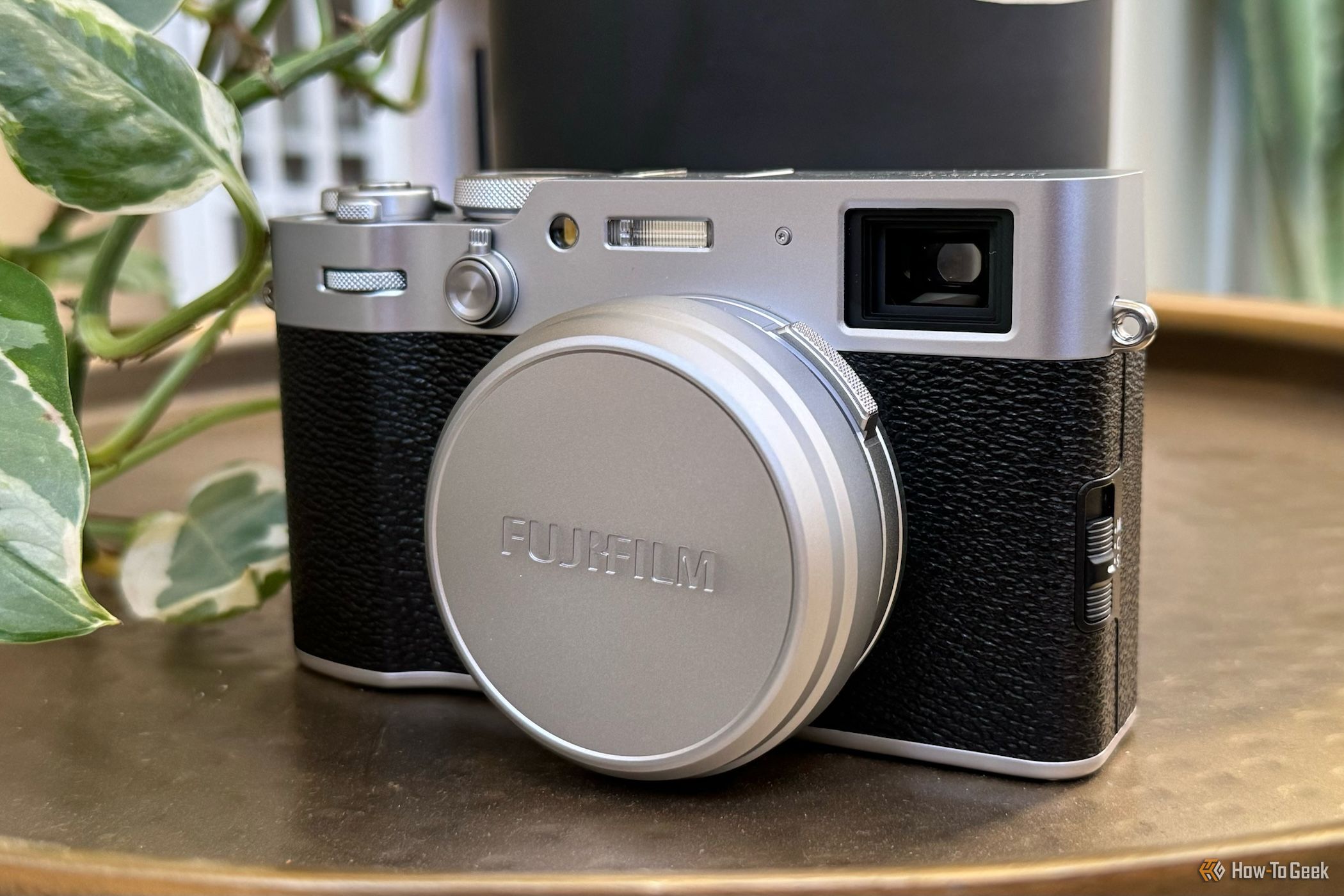
Tyler Hayes / How-To Geek
The Fujifilm X100VI is very much for photography hobbyists and professionals of some sort. It’s great if you’re using it for work-related tasks, but ultimately, anyone who wants to capture vivid memories as naturally as possible could be a candidate for this camera.
There are plenty of reasons to be drawn to the X100VI, but the primary one is that you want better pictures than your phone can offer. And trust me, the photos from this dedicated camera can absolutely capture more emotion under the right circumstances. But I won’t completely stop taking photos with my iPhone 15 Pro because it’s too convenient and takes good photos.
There are plenty of bigger, more capable interchangeable lens cameras to choose from if you want to go down that road. Since there are a lot fewer small, pocketable ones that you can take around to most places, this one stands out even more. The small-ish size of the X100VI is a powerful tool for a creative type of person. If you are looking for something you can pack away and travel with, the X100VI is an all-around wonderful choice.


Fujifilm X100VI
8/ 10
X100VI has 20 built-in Film Simulation modes and enjoy a new creative opportunity with REALA ACE. Featuring Fujifilm’s latest X-Trans CMOS 5 HR sensor and X-Processor 5, you can create 40.2MP images or video up to 6.2K/30P, sharing them in the moment or cherishing them for the future.
$1599.99 at Best Buy $1599.99 at B&H Photo Video $1599.99 at Moment
Also read:
- [New] Digital Dollar First Steps in YouTubers' Revenue
- [Updated] 2024 Approved Unveiling Top ASMR for iPhone Users
- [Updated] 2024 Approved Weaving External Pages Into Your Insta Narrative
- [Updated] Unlocking Your Videos Top 7 Rippers Explored
- A Quick Guide to Honor Magic 5 Pro FRP Bypass Instantly
- Discover the Best Places Online: A List of 17 Sites with Free E-Books
- Discovering Delightful Adventures with Pokémon: The Shining Pearl Edition
- Expert Advice on Resolving Continuous Freezing of Content Warning Programs in the Windows Operating System
- Expert Review: Unleashing New Capabilities in Microsoft OneNote Through the Onetastic Add-In
- In 2024, Tracing the Flow of Money in Consumer Opinions
- In-Depth Evaluation of the Amazon Basics 7X USB 3.0 Connectivity Hub
- Mobvoi Ticwatch Pro with LTE: An In-Depth Evaluation of Your Ideal Smartwatch Companion
- QC35 II Unpacked: The Best Headphones for Focus & Peace
- The Definitive Guide to Choosing an Android Champion: Samsung’n Galaxy S21 Ultra Unveiled
- Unleashing the Fun with Zombies: A Thorough Examination of '7 Days to Die' And Its Survival Adventure
- Title: Fujifilm X100V Unveiled: A Comprehensive Review of The Most Popular Camera Today
- Author: Eric
- Created at : 2024-11-20 00:41:23
- Updated at : 2024-11-24 19:30:56
- Link: https://buynow-reviews.techidaily.com/fujifilm-x100v-unveiled-a-comprehensive-review-of-the-most-popular-camera-today/
- License: This work is licensed under CC BY-NC-SA 4.0.